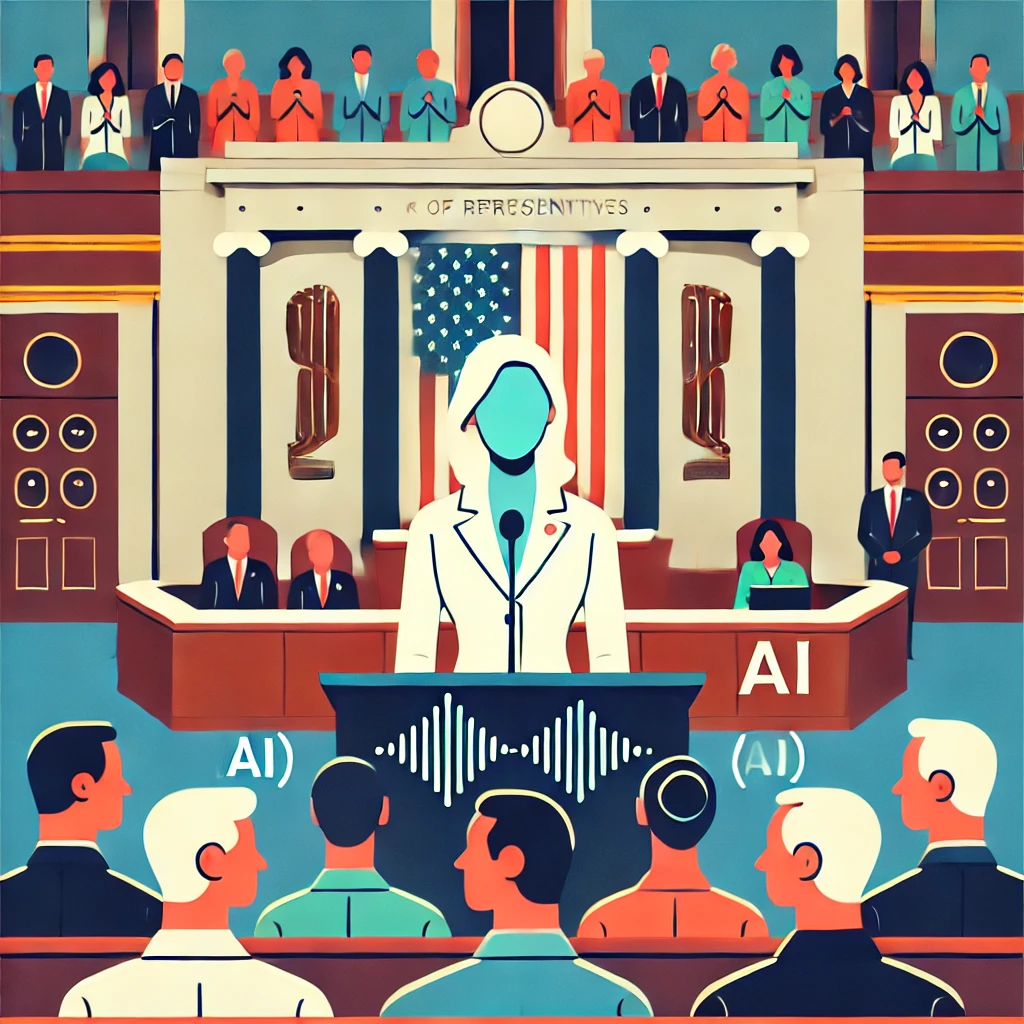In a remarkable turn of events, a document long believed to be a mere copy of the Magna Carta has been confirmed as an original. This significant finding took place at Harvard Law School Library, where the document was purchased in 1946 for $27.50 from the London book dealers Sweet & Maxwell. The library had assumed that the document was a faded and stained reproduction, miscatalogued as dating back to 1327 during the reign of King Edward III.
The book dealers had acquired this document just a month prior at a Sotheby’s auction, purchasing it from a First World War pilot for £42. The misdating of the document led to its classification as a copy, which obscured its true historical value. However, recent research has revealed that this document is, in fact, a rare original Magna Carta issued in 1300 by King Edward I, significantly increasing its worth to millions of dollars.
The discovery was made by David Carpenter, a professor of medieval history at King’s College London. While studying online versions of the Magna Carta in December 2023, Carpenter noticed that the document displayed on Harvard’s website might be an original. Intrigued, he conducted a thorough examination, comparing the text and performing various tests to confirm its authenticity.
The Magna Carta, originally established in 1215 under King John, is a foundational legal document that outlined the rights of ordinary people under common law. Its significance lies in its role in limiting the powers of the monarchy and establishing the principle that everyone, including the king, is subject to the law. The 1300 version owned by Harvard Law School adds to the historical importance of this document and its legacy.
Despite the newfound value of the document, Harvard Law School has no intention of selling it. Instead, the library aims to preserve this important piece of history, which serves as a testament to the evolution of legal rights and governance. The confirmation of this original Magna Carta not only enriches Harvard’s collection but also enhances our understanding of the historical context in which it was created.
Original news source: Magna Carta ‘copy’ miscatalogued in 1940s found to be original (Sky News)
🎧 Listen:
Slow
Normal
Fast
📖 Vocabulary:
| 1 | remarkable | Worthy of attention; extraordinary |
| 2 | confirmed | Verified as true or genuine |
| 3 | significant | Having great importance or meaning |
| 4 | reproduction | A copy or imitation of an original |
| 5 | miscatalogued | Incorrectly classified or recorded |
| 6 | obscured | Hidden or made unclear |
| 7 | authenticity | The quality of being genuine or real |
| 8 | foundational | Serving as a basis or core for something |
| 9 | outlined | Described or defined clearly |
| 10 | monarchy | A form of government with a monarch at the head |
| 11 | legacy | Something handed down from the past; heritage |
| 12 | intention | A plan or aim to do something |
| 13 | preserve | To maintain or keep in its original state |
| 14 | testament | Evidence or proof of something’s existence or truth |
| 15 | governance | The act or process of governing or overseeing control and direction |
Group or Classroom Activities
Warm-up Activities:
– OPINION POLL
Instructions: Students will be divided into small groups and will discuss their opinions on the significance of historical documents like the Magna Carta. Each group will then share their views with the class, and a poll will be conducted to see which opinions are most common.
– HEADLINE CREATION
Instructions: Students will work in pairs to create catchy headlines for the article about the discovery of the original Magna Carta. They should aim to capture the essence of the news in a few words, focusing on the excitement of the find and its historical importance.
– CHARADES
Instructions: Students will act out key terms and concepts from the article (e.g., “Magna Carta,” “King Edward,” “Harvard Law School”) without speaking, while their classmates guess the terms. This activity will help reinforce vocabulary and engage students in a fun way.
– MIND MAP
Instructions: In groups, students will create a mind map that explores the historical significance of the Magna Carta and its impact on modern legal systems. They will identify key figures, events, and ideas related to the document and present their mind map to the class.
– SPEED SUMMARIZING
Instructions: Students will work in pairs to take turns summarizing the article in under one minute. After each summary, they will provide feedback to each other on clarity and key points, helping to develop their summarization skills further.
🤔 Comprehension Questions:
1. What was the initial assumption about the document found at Harvard Law School Library?
2. How much did Harvard Law School Library pay for the document in 1946?
3. Who was responsible for confirming the document as an original Magna Carta?
4. From whom did the book dealers acquire the document before selling it to Harvard?
5. What year was the original Magna Carta issued by King Edward I?
6. What was the primary significance of the Magna Carta established in 1215 under King John?
7. What are Harvard Law School’s intentions regarding the newly confirmed original Magna Carta?
8. How does the discovery of this original Magna Carta enhance our understanding of legal rights and governance?
Go to answers ⇩
🎧✍️ Listen and Fill in the Gaps:
In a (1)______ turn of events, a document long believed to be a mere copy of the Magna Carta has been (2)______ as an original. This (3)______ finding took place at Harvard Law School Library, where the document was purchased in 1946 for $27.50 from the London book dealers Sweet & Maxwell. The library had assumed that the document was a (4)______ and stained reproduction, miscatalogued as dating back to 1327 during the reign of King Edward III.
The book dealers had acquired this document just a month prior at a Sotheby’s auction, purchasing it from a (5)______ World War pilot for £42. The misdating of the document led to its classification as a copy, which obscured its true historical value. However, recent research has revealed that this document is, in fact, a rare original Magna (6)______ issued in 1300 by King Edward I, significantly increasing its worth to millions of dollars.
The (7)______ was made by (8)______ Carpenter, a professor of medieval history at King’s College London. While studying online versions of the Magna Carta in December 2023, Carpenter noticed that the (9)______ displayed on Harvard’s website might be an original. Intrigued, he conducted a (10)______ examination, comparing the text and performing various tests to confirm its authenticity.
The Magna Carta, originally established in 1215 under King John, is a (11)______ legal document that (12)______ the rights of ordinary people under common law. Its significance lies in its role in limiting the powers of the monarchy and establishing the principle that everyone, including the king, is subject to the law. The 1300 version owned by Harvard Law School adds to the historical importance of this document and its (13)______.
Despite the newfound value of the document, Harvard Law School has no intention of selling it. Instead, the (14)______ aims to preserve this important (15)______ of history, which serves as a testament to the evolution of legal rights and governance. The confirmation of this original Magna Carta not only enriches Harvard’s (16)______ but also enhances our understanding of the historical context in which it was created.
Go to answers ⇩
💬 Discussion Questions:
Students can ask a partner these questions, or discuss them as a group.
1. What is the significance of historical documents like the Magna Carta in shaping modern legal systems?
2. How would you feel if you discovered a valuable artifact in your possession that you thought was worthless?
3. Do you think it’s important for libraries to preserve historical documents? Why or why not?
4. What is a modern equivalent of the Magna Carta in terms of protecting individual rights?
5. How do you think the discovery of the original Magna Carta will impact the study of history and law?
6. Do you like visiting museums or libraries that showcase historical documents? Why or why not?
7. How would you react if a historical document you were studying turned out to be a forgery?
8. Do you think the value of historical documents should be measured solely in monetary terms? Why or why not?
9. What is a lesson we can learn from the misclassification of the Magna Carta about the importance of careful documentation?
10. How would you feel if you were a historian involved in the research that led to such a significant discovery?
11. Do you think that the general public has enough access to historical documents? Why or why not?
12. What is a historical event or document that you believe needs more recognition in today’s society?
13. How do you think the role of technology has changed the way we study and authenticate historical documents?
14. Do you think that the principles outlined in the Magna Carta are still relevant today? Why or why not?
15. How would you feel if a significant piece of your country’s history was discovered in another country?
Individual Activities
📖💭 Vocabulary Meanings:
Match each word to its meaning.
Words:
1. remarkable
2. confirmed
3. significant
4. reproduction
5. miscatalogued
6. obscured
7. authenticity
8. foundational
9. outlined
10. monarchy
11. legacy
12. intention
13. preserve
14. testament
15. governance
Meanings:
(A) Hidden or made unclear
(B) A form of government with a monarch at the head
(C) Incorrectly classified or recorded
(D) The quality of being genuine or real
(E) Worthy of attention; extraordinary
(F) Verified as true or genuine
(G) A plan or aim to do something
(H) Something handed down from the past; heritage
(I) A copy or imitation of an original
(J) To maintain or keep in its original state
(K) The act or process of governing or overseeing control and direction
(L) Serving as a basis or core for something
(M) Having great importance or meaning
(N) Evidence or proof of something’s existence or truth
(O) Described or defined clearly
Go to answers ⇩
🔡 Multiple Choice Questions:
1. Where was the original Magna Carta confirmed to be located?
(a) Oxford University Library
(b) British Library
(c) Yale University Library
(d) Harvard Law School Library
2. In what year was the document purchased by Harvard Law School?
(a) 1950
(b) 1935
(c) 1946
(d) 1960
3. Who was the professor that confirmed the document’s authenticity?
(a) John Smith
(b) David Carpenter
(c) Michael Johnson
(d) Sarah Williams
4. What year was the original Magna Carta issued that Harvard Law School owns?
(a) 1215
(b) 1327
(c) 1300
(d) 1400
5. Who was the king during the issuance of the 1300 version of the Magna Carta?
(a) King John
(b) King Edward III
(c) King Henry VIII
(d) King Edward I
6. What was the original purpose of the Magna Carta established in 1215?
(a) To declare independence from France
(b) To outline the rights of ordinary people under common law
(c) To establish a new monarchy
(d) To create a constitution
7. How much was the document purchased for by Harvard Law School?
(a) $27.50
(b) $100
(c) $50
(d) $10
8. What is Harvard Law School’s intention regarding the original Magna Carta after its confirmation?
(a) To preserve it
(b) To sell it
(c) To display it in a museum
(d) To donate it to another institution
Go to answers ⇩
🕵️ True or False Questions:
1. Harvard Law School intends to sell the document rather than preserve it, not recognizing its historical significance.
2. Recent research revealed that the document is a common replica Magna Carta issued in 1300 by King Edward I.
3. The book dealers acquired the document from a First World War pilot at a Sotheby’s auction.
4. The document was purchased by Harvard Law School Library in 1946 for $27.50.
5. The Magna Carta was originally established in 1215 under King John and outlines the rights of the privileged class.
6. A document believed to be an original Magna Carta has been confirmed as a copy.
7. David Carpenter, a professor of medieval history, conducted the examination that confirmed the document’s authenticity.
8. The document was miscatalogued as dating back to 1327 during the reign of King Edward III.
Go to answers ⇩
📝 Write a Summary:
Write a summary of this news article in two sentences.
Check your writing now with the best free AI for English writing!
Writing Questions:
Answer the following questions. Write as much as you can for each answer.
Check your answers with our free English writing assistant!
1. What led to the misclassification of the document at Harvard Law School Library?
2. Who was responsible for confirming the authenticity of the document, and what methods did they use?
3. Why is the Magna Carta considered a foundational legal document, and what are its key principles?
4. What are Harvard Law School’s plans for the newly confirmed original Magna Carta?
5. How does the discovery of this original Magna Carta impact our understanding of legal rights and governance?
✅ Answers
🤔✅ Comprehension Question Answers:
1. What was the initial assumption about the document found at Harvard Law School Library?
The initial assumption was that the document was a faded and stained reproduction, miscatalogued as dating back to 1327.
2. How much did Harvard Law School Library pay for the document in 1946?
Harvard Law School Library paid $27.50 for the document in 1946.
3. Who was responsible for confirming the document as an original Magna Carta?
David Carpenter, a professor of medieval history at King’s College London, was responsible for confirming the document as an original Magna Carta.
4. From whom did the book dealers acquire the document before selling it to Harvard?
The book dealers acquired the document from a First World War pilot before selling it to Harvard.
5. What year was the original Magna Carta issued by King Edward I?
The original Magna Carta was issued by King Edward I in the year 1300.
6. What was the primary significance of the Magna Carta established in 1215 under King John?
The primary significance of the Magna Carta established in 1215 was to outline the rights of ordinary people under common law and to limit the powers of the monarchy.
7. What are Harvard Law School’s intentions regarding the newly confirmed original Magna Carta?
Harvard Law School intends to preserve the newly confirmed original Magna Carta and has no intention of selling it.
8. How does the discovery of this original Magna Carta enhance our understanding of legal rights and governance?
The discovery enhances our understanding of legal rights and governance by providing insight into the historical context in which the Magna Carta was created and its role in the evolution of legal rights.
Go back to questions ⇧
🎧✍️✅ Listen and Fill in the Gaps Answers:
(1) remarkable
(2) confirmed
(3) significant
(4) faded
(5) First
(6) Carta
(7) discovery
(8) David
(9) document
(10) thorough
(11) foundational
(12) outlined
(13) legacy
(14) library
(15) piece
(16) collection
Go back to questions ⇧
📖💭✅ Vocabulary Meanings Answers:
1. remarkable
Answer: (E) Worthy of attention; extraordinary
2. confirmed
Answer: (F) Verified as true or genuine
3. significant
Answer: (M) Having great importance or meaning
4. reproduction
Answer: (I) A copy or imitation of an original
5. miscatalogued
Answer: (C) Incorrectly classified or recorded
6. obscured
Answer: (A) Hidden or made unclear
7. authenticity
Answer: (D) The quality of being genuine or real
8. foundational
Answer: (L) Serving as a basis or core for something
9. outlined
Answer: (O) Described or defined clearly
10. monarchy
Answer: (B) A form of government with a monarch at the head
11. legacy
Answer: (H) Something handed down from the past; heritage
12. intention
Answer: (G) A plan or aim to do something
13. preserve
Answer: (J) To maintain or keep in its original state
14. testament
Answer: (N) Evidence or proof of something’s existence or truth
15. governance
Answer: (K) The act or process of governing or overseeing control and direction
Go back to questions ⇧
🔡✅ Multiple Choice Answers:
1. Where was the original Magna Carta confirmed to be located?
Answer: (d) Harvard Law School Library
2. In what year was the document purchased by Harvard Law School?
Answer: (c) 1946
3. Who was the professor that confirmed the document’s authenticity?
Answer: (b) David Carpenter
4. What year was the original Magna Carta issued that Harvard Law School owns?
Answer: (c) 1300
5. Who was the king during the issuance of the 1300 version of the Magna Carta?
Answer: (d) King Edward I
6. What was the original purpose of the Magna Carta established in 1215?
Answer: (b) To outline the rights of ordinary people under common law
7. How much was the document purchased for by Harvard Law School?
Answer: (a) $27.50
8. What is Harvard Law School’s intention regarding the original Magna Carta after its confirmation?
Answer: (a) To preserve it
Go back to questions ⇧
🕵️✅ True or False Answers:
1. Harvard Law School intends to sell the document rather than preserve it, not recognizing its historical significance. (Answer: False)
2. Recent research revealed that the document is a common replica Magna Carta issued in 1300 by King Edward I. (Answer: False)
3. The book dealers acquired the document from a First World War pilot at a Sotheby’s auction. (Answer: True)
4. The document was purchased by Harvard Law School Library in 1946 for $27.50. (Answer: True)
5. The Magna Carta was originally established in 1215 under King John and outlines the rights of the privileged class. (Answer: False)
6. A document believed to be an original Magna Carta has been confirmed as a copy. (Answer: False)
7. David Carpenter, a professor of medieval history, conducted the examination that confirmed the document’s authenticity. (Answer: True)
8. The document was miscatalogued as dating back to 1327 during the reign of King Edward III. (Answer: True)
Go back to questions ⇧













